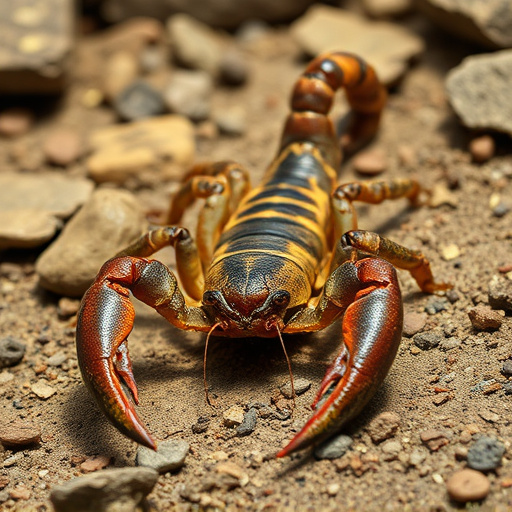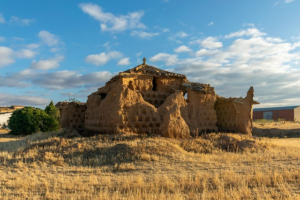Scorpion Habitat & Survival in Marana’s Desert: Tucson Scorpion Control Insights
Marana's desert landscape presents unique challenges for scorpion management due to its diverse…….

Marana's desert landscape presents unique challenges for scorpion management due to its diverse conditions supporting specific species like the Sonoran Desert Scorpion and Black-tailed Scorpion. Understanding environmental factors, such as terrain, microclimates, water availability, and prey abundance, is crucial for effective scorpion control Tucson. Professionals can employ humane methods like targeted prevention techniques, non-toxic repellents, traps, and regular inspections to maintain ecological balance while addressing scorpion concerns in Tucson-adjacent areas.
In the parched landscapes of Marana’s desert environments, scorpions thrive despite harsh conditions. This intricate ecosystem, a web of delicate balance, plays host to diverse scorpion species, each with unique adaptations. Understanding Marana’s desert ecosystem and its impact on scorpion habitat is crucial for both ecological awareness and effective scorpion control in nearby Tucson. From identifying local scorpion species to exploring adaptation strategies, this guide offers insights into these fascinating arachnids and practical tips for managing their presence in the desert-adjacent homes of Tucson residents.
- Understanding Marana's Desert Ecosystem: An Overview
- Scorpion Species in the Tucson Area: Identification and Behavior
- Factors Influencing Scorpion Habitat and Distribution in Marana
- Adaptation Strategies: How Scorpions Survive the Harsh Desert Conditions
- Scorpion Control Measures for Homeowners in Tucson's Desert Environment
Understanding Marana's Desert Ecosystem: An Overview

Marana, located in southeastern Arizona, is renowned for its diverse and challenging desert landscapes. Understanding this ecosystem is crucial to appreciating the unique challenges faced by local wildlife, including scorpions. The region’s arid climate, characterized by scorching summer temperatures and minimal rainfall, creates a harsh environment where only the hardiest creatures can survive. This aridity encourages the development of sparse vegetation, comprising mostly cacti, succulents, and drought-resistant shrubs, providing essential cover and food sources for scorpions.
The desert in Marana is a complex web of habitats, from sandy washes to rocky outcrops and creosote bush thickets. These varying environments offer diverse microclimates, allowing for the coexistence of numerous scorpion species. Effective scorpion control in Tucson-adjacent areas like Marana requires a deep understanding of this intricate ecosystem. By recognizing the specific conditions that facilitate scorpion proliferation, professionals can implement tailored strategies to manage populations humanely and maintain ecological balance in these delicate desert environments.
Scorpion Species in the Tucson Area: Identification and Behavior

In the desert landscapes of Marana, a diverse range of scorpion species has adapted to thrive in this arid environment. Among them, the most common are the Sonoran Desert Scorpion (Cacoma validus) and the Black-tailed Scorpion (Androctonus biunguis). These scorpions have unique characteristics that enable them to survive the extreme conditions of the Tucson area’s deserts.
The Sonoran Desert Scorpion is easily identifiable by its light brown color and distinct dark stripes running down its back. It prefers sandy habitats, often burrowing under rocks or in loose sand to escape the heat during the day. These scorpions are primarily nocturnal, hunting for insects and other small prey after sunset when temperatures drop. On the other hand, the Black-tailed Scorpion has a more elusive nature; it’s characterized by its dark body and a distinctive black tail tip. This species is known for its aggressive defense mechanism and is often found in rocky crevices and under debris, waiting to ambush unsuspecting victims. For those concerned about scorpion control in Tucson, understanding these species’ behaviors is crucial for implementing effective prevention and mitigation strategies.
Factors Influencing Scorpion Habitat and Distribution in Marana

In Marana’s desert landscapes, various factors collectively shape the habitat and distribution of scorpions. One primary determinant is terrain; these arachnids tend to thrive in rugged, rocky areas, taking advantage of crevices and burrows for shelter and protection from predators. The region’s diverse microclimates also play a significant role, with temperatures varying greatly between day and night providing ideal conditions for their survival.
Additionally, the availability of water sources is crucial for scorpion habitat persistence. While capable of tolerating extreme aridity, consistent moisture from occasional rainfall or nearby streams supports larger populations. Moreover, the presence of suitable prey, primarily insects and small vertebrates, influences scorpion distribution by facilitating their proliferation in areas rich in such food sources. These factors combined guide the specific locations where scorpions are most commonly encountered, making knowledge of these environmental considerations vital for effective scorpion control Tucson methods.
Adaptation Strategies: How Scorpions Survive the Harsh Desert Conditions

Scorpions, a resilient species, have mastered the art of survival in Marana’s desert environments through remarkable adaptation strategies. These arachnids are well-equipped to handle the extreme heat and scarcity of resources. One of their key adaptations is the ability to regulate their body temperature effectively. Scorpions can withstand high temperatures during the day by burrowing into the cool, dark sand, emerging only at night when temperatures drop, allowing them to hunt and move efficiently.
Moreover, scorpions are highly efficient water conservers. They reduce water loss through specialized breathing mechanisms and sparse urination. Their diet consists of small insects and arachnids, which provides sufficient moisture, ensuring they stay hydrated. In terms of scorpion control Tucson residents can employ, understanding these adaptation strategies is crucial. By recognizing their behavior patterns and habitats, one can implement effective prevention methods to minimize interactions with these fascinating yet potentially dangerous creatures.
Scorpion Control Measures for Homeowners in Tucson's Desert Environment

In Tucson’s desert environment, scorpion control is a significant concern for homeowners. Scorpions are well-adapted to arid conditions and can quickly establish populations in areas with limited water and shelter. To manage scorpions effectively, residents should implement several preventive measures. Regularly clearing debris, such as fallen leaves and branches, from around the house can help reduce hiding spots. Sealing cracks and gaps in walls, foundations, and doors prevents scorpions from entering indoor spaces. Additionally, maintaining a clean yard with no stacked wood or trash provides fewer habitats for scorpions to thrive.
For scorpion control Tucson, using non-toxic repellents and traps designed specifically for desert species can be effective. Professional pest control services offer specialized treatments tailored to the local ecosystem, ensuring that scorpions are controlled humanely and without harming beneficial insects or other wildlife. Regular inspections by professionals help identify scorpion infestations early, making it easier to implement targeted solutions and prevent these arachnids from establishing dominant populations in homes and yards.
Marana’s desert ecosystem provides a unique and challenging environment for scorpions, with various factors influencing their habitat and distribution. Understanding these dynamics is crucial for both appreciating the resilience of these arachnids and implementing effective scorpion control measures in Tucson’s desert areas. By recognizing the adaptation strategies that enable scorpions to survive harsh conditions, homeowners can employ tailored methods to manage scorpion populations safely and humanely, ensuring a harmonious coexistence with these intriguing creatures in their natural habitat. Effective scorpion control Tucson strategies focus on prevention, sanitation, and professional intervention when necessary, allowing residents to enjoy their desert homes without compromising the balance of this delicate ecosystem.







